Welcome to Hebei xinjiasheng Pump Industry Co., Ltd. to serve you sincerely.
Welcome to Hebei xinjiasheng Pump Industry Co., Ltd. to serve you sincerely.
SH type pump is a single-stage, double suction, split casing centrifugal pump for pumping clean water and liquids with physical and chemical properties similar to water.
When the lift of this type of pump is 9 m to 140 m, the flow is 126 m 3/ to 12500 m 3/ and the maximum temperature of the liquid shall not exceed 80 ℃. It is suitable for factories, mines, urban water supply, power stations, large water conservancy projects, farmland irrigation and waterlogging drainage. The 48sh-22 large pump can also be used as a circulating pump in thermal power stations.
Meaning of pump model: e.g. 10sh-13a
10- the diameter of the suction port is divided by 25 (that is, the diameter of the suction port of the pump is 250 mm).
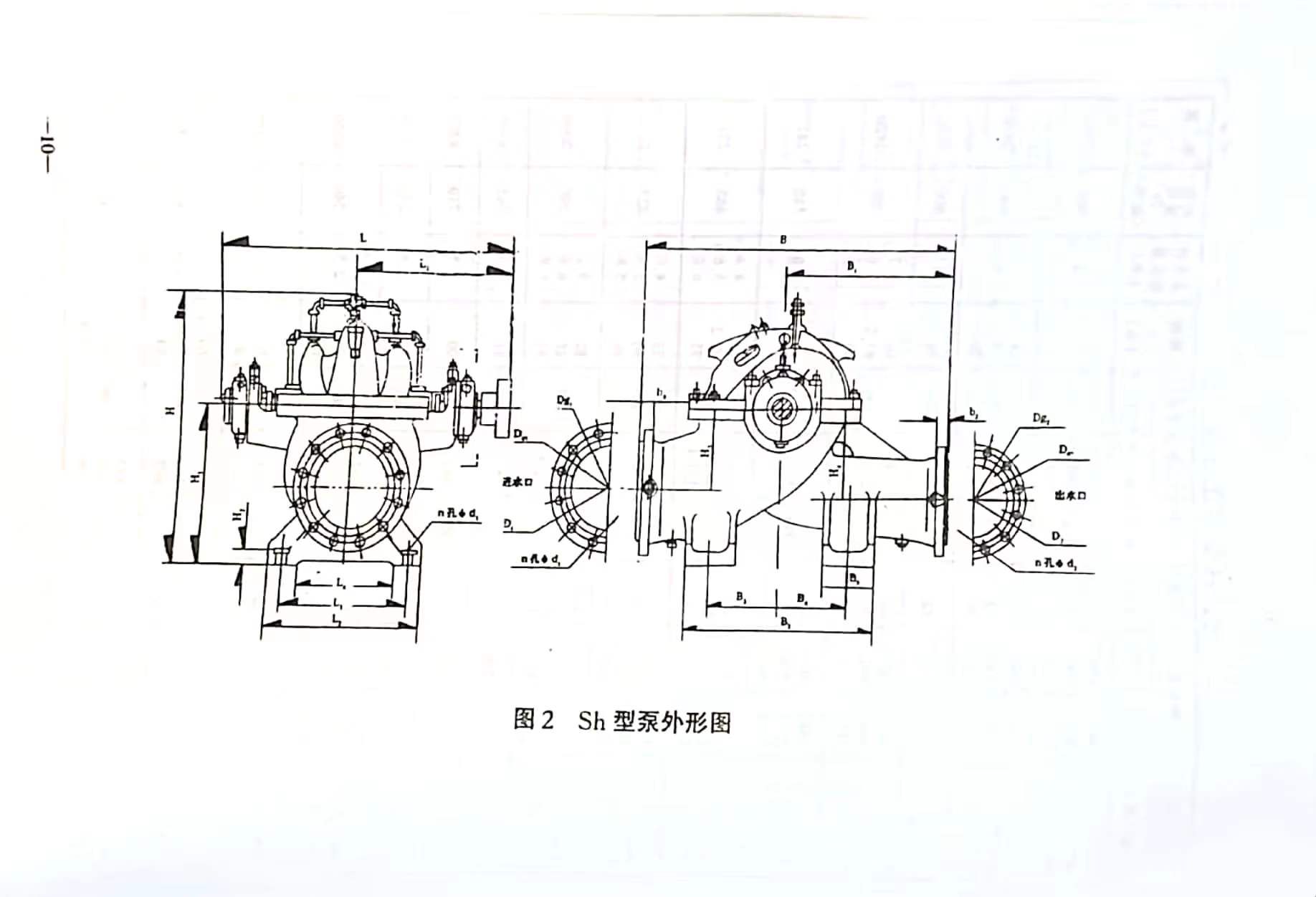
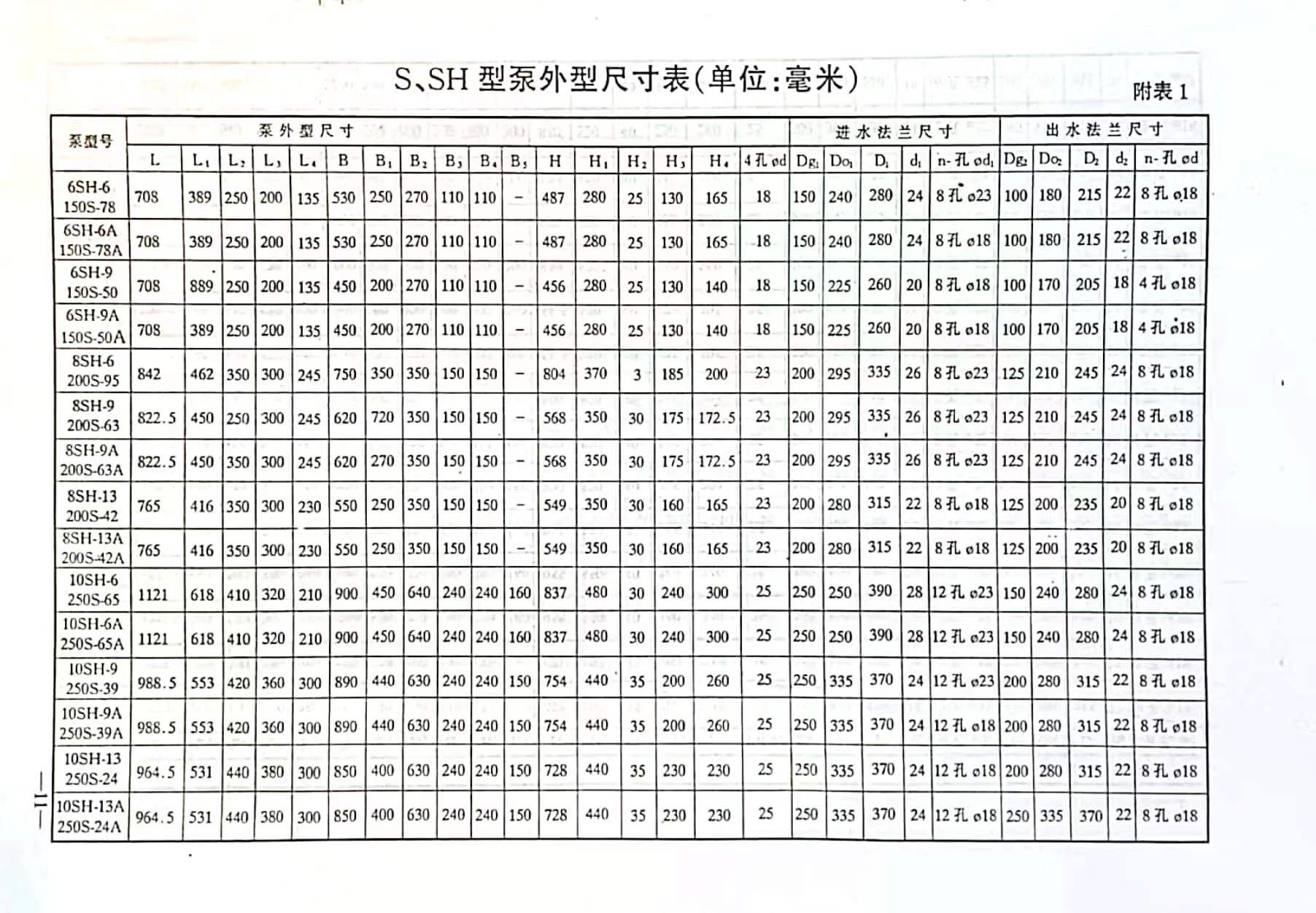
SSH one double suction single stage horizontal centrifugal clean water pump
13- the specific speed is divided by 10 (that is, the specific speed of the pump is 130)
A means that the pump has been replaced with impellers with different outer diameters.
2、 Structure description
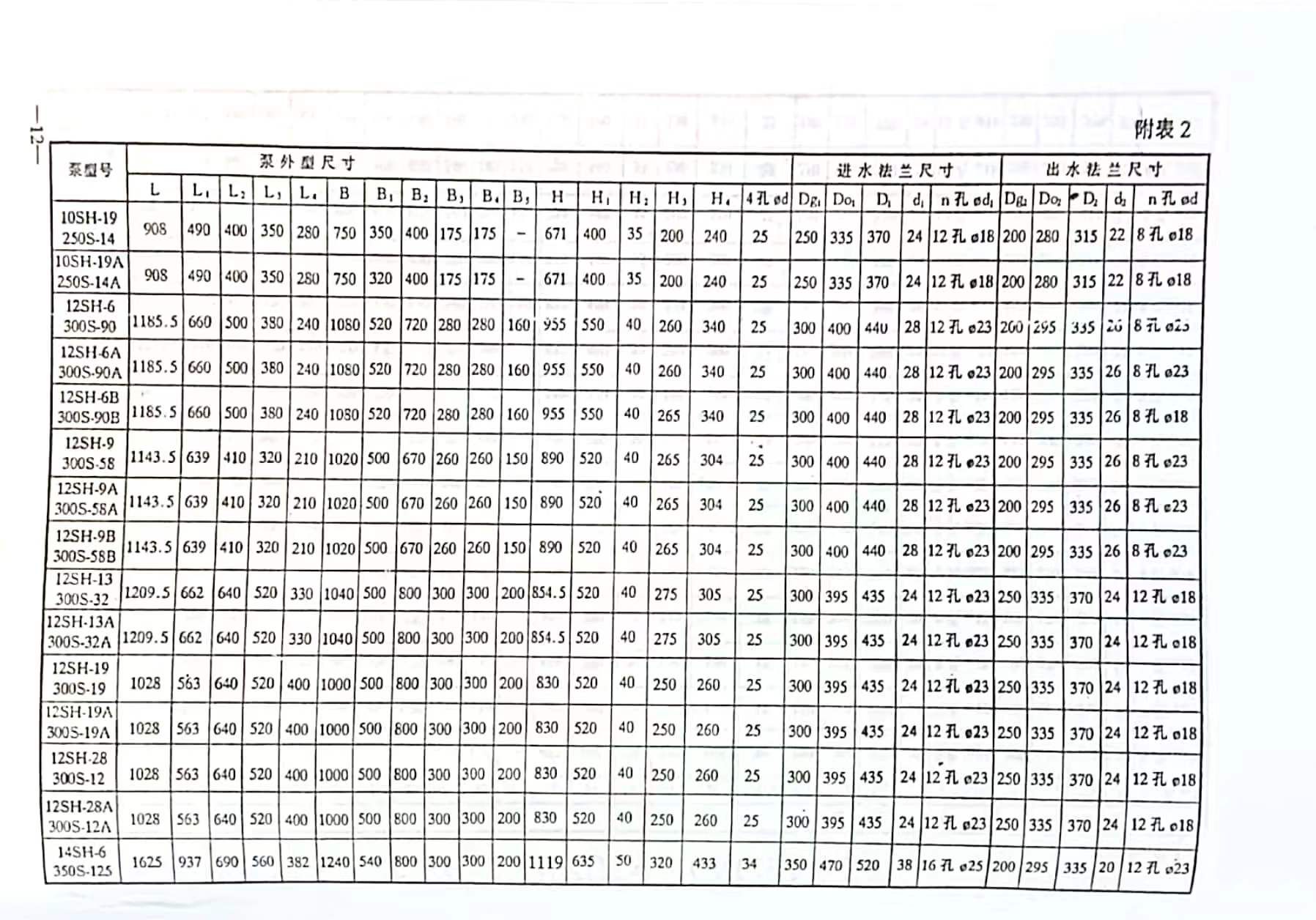
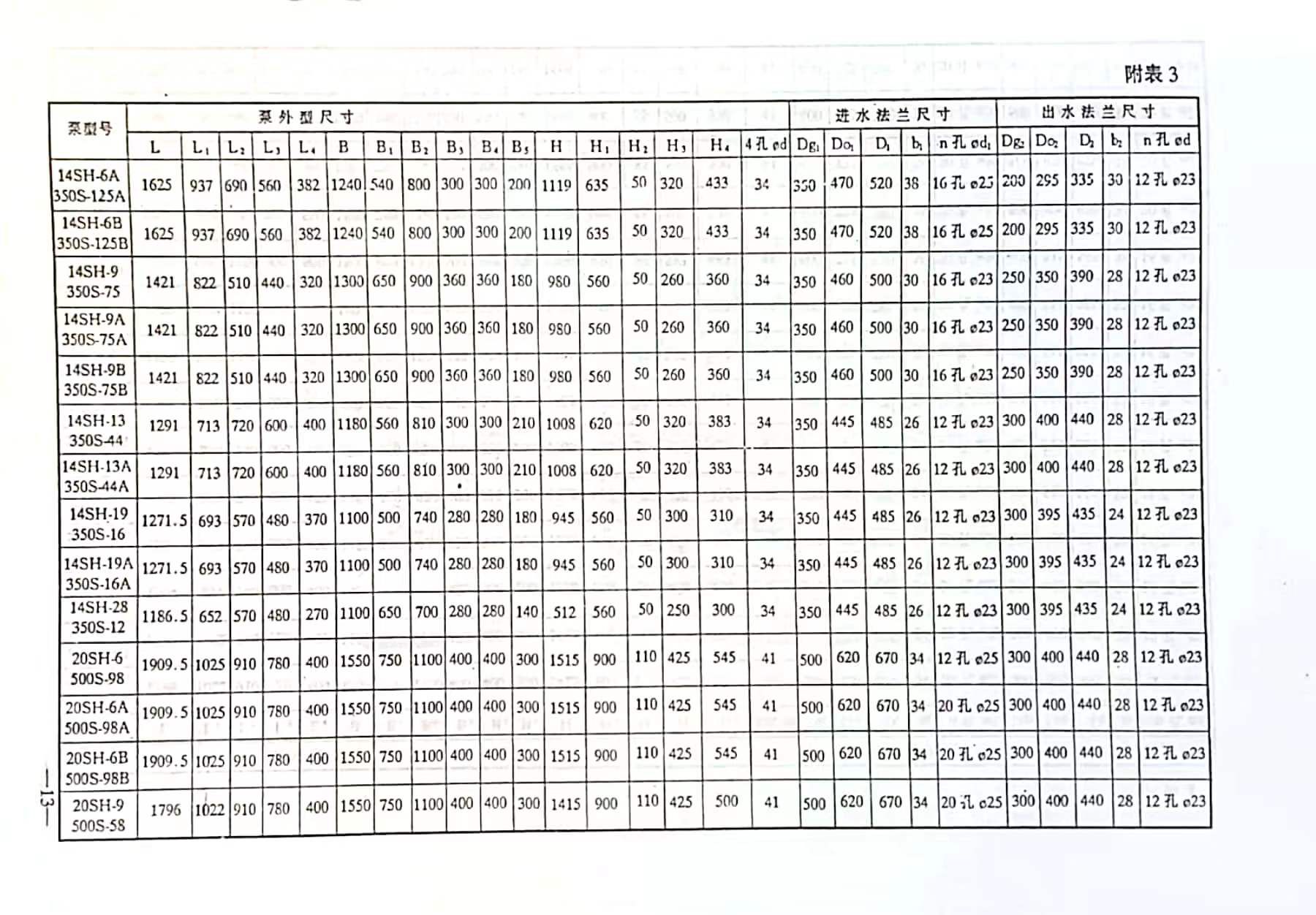
S. The suction inlet and discharge outlet of the SH pump are both below the axis of the pump, in a horizontal direction and in a vertical position with the axis. The pump cover of the pump is fixed on the pump body with stud bolts and conical positioning screws, which can be easily opened and inspected all parts in the pump without disassembling the water inlet, discharge pipeline and motor. Therefore, the maintenance is very convenient. From the transmission direction, the SH pump rotates counterclockwise; S-type water pumps rotate clockwise;
S. The main parts of SH type pump include: pump body (1), pump cover (2), impeller (3), shaft (4), double suction sealing ring (5), shaft sleeve (6) and bearing body (14).
The pump body (1) is made of cast iron. The working chamber of the impeller is formed with the pump cover, and the flanges of the inlet and outlet channels are provided with pipe screw holes for installing vacuum gauges and pressure gauges. The lowest part of the pipe neck is provided with a pipe screw hole for draining water.
The pump cover (2) is made of cast iron. The upper part is provided with a pipe screw hole for installing the water seal pipe and the vent pipe and a hook for lifting the pump cover.
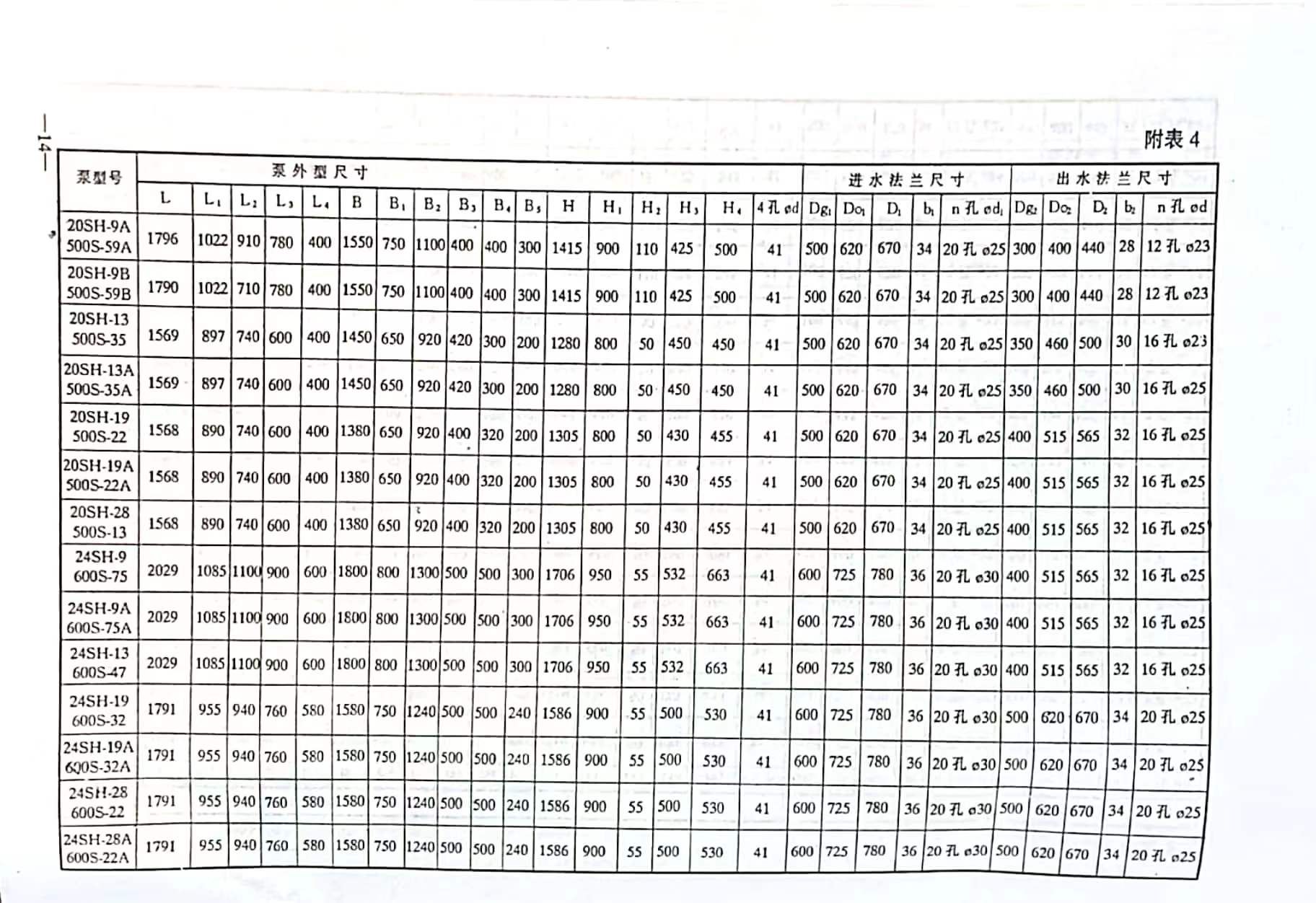
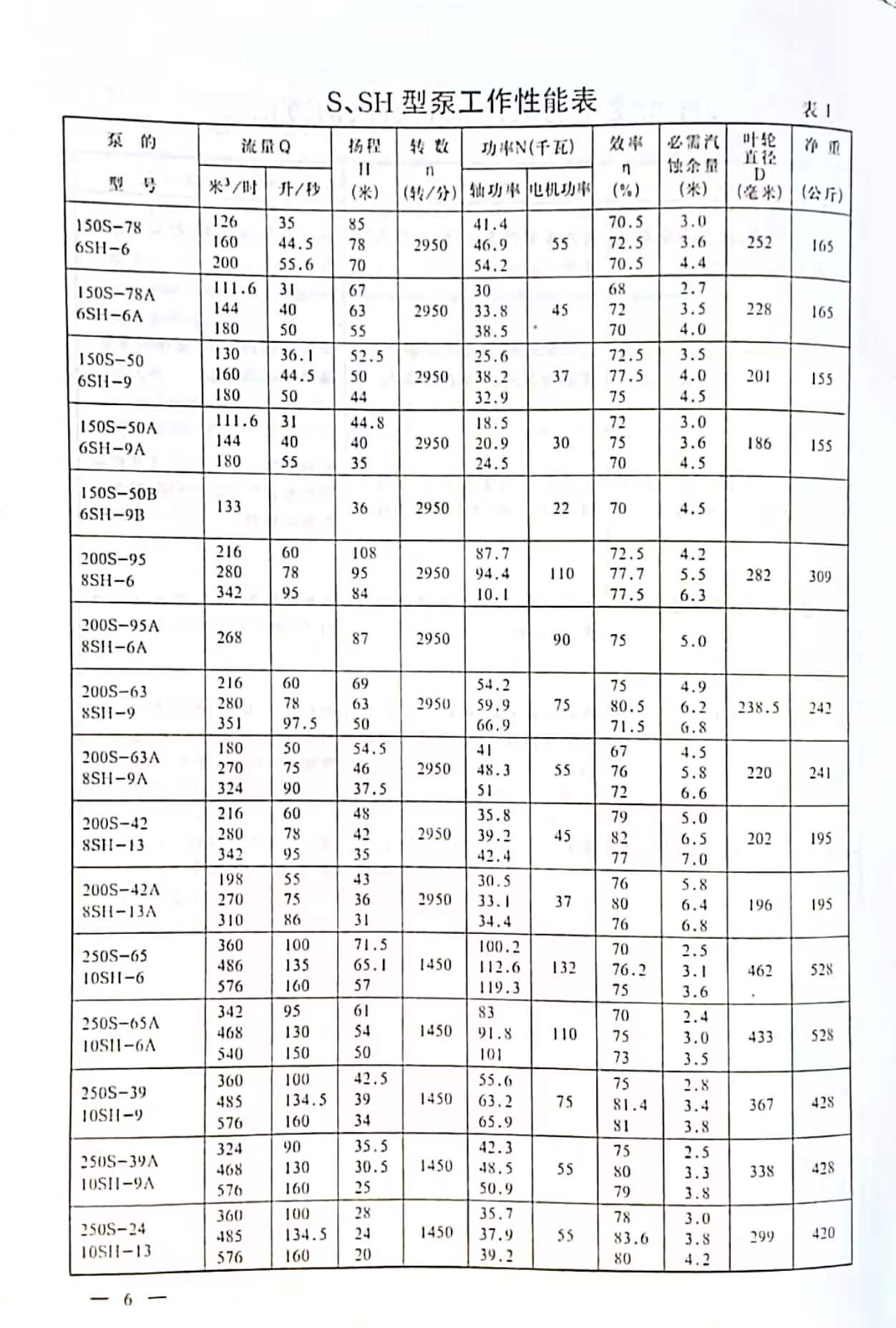
The impeller (3) is made of cast iron. Its shape is symmetrical. There are twisted blades between the two walls. The liquid enters the impeller from both sides. The static balance test is carried out during manufacturing.
The shaft (4) is made of high-quality carbon steel. The center of the shaft is the impeller, which is fixed with the key, the shaft sleeve and the shaft sleeve nuts on both sides. The right end of the shaft is equipped with a coupling, which is directly connected with the motor. Belt transmission is not allowed at the coupling end. If belt transmission is required, another bracket must be set to support the pulley.
The double suction sealing ring (5) is made of cast iron. To prevent the high-pressure water in the pump from leaking back to the water inlet part, a raised semi circular ring is made on the double suction sealing ring and embedded in the pump body to fix the double suction sealing ring. It is a vulnerable part and can be replaced with spare parts after wear.
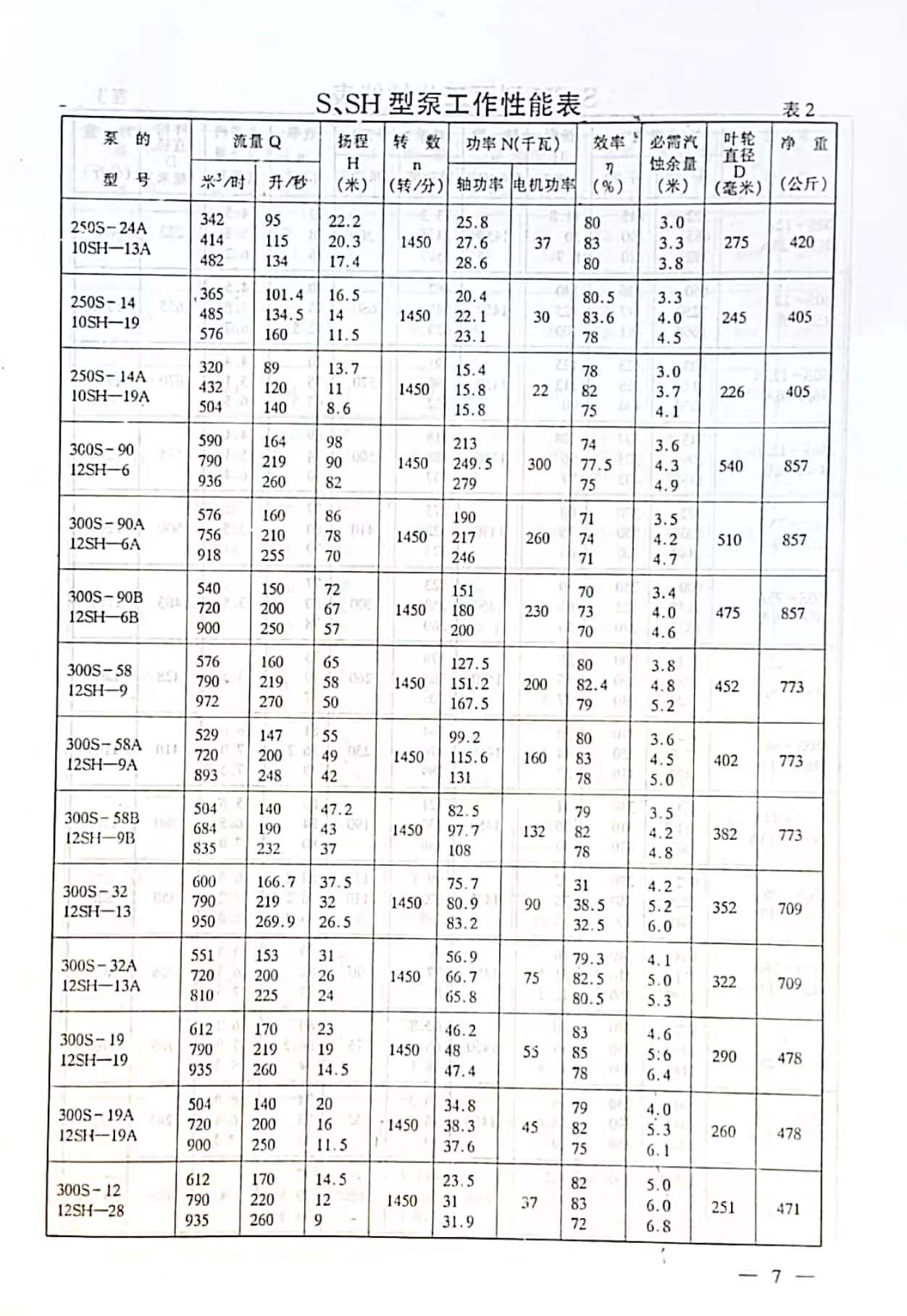
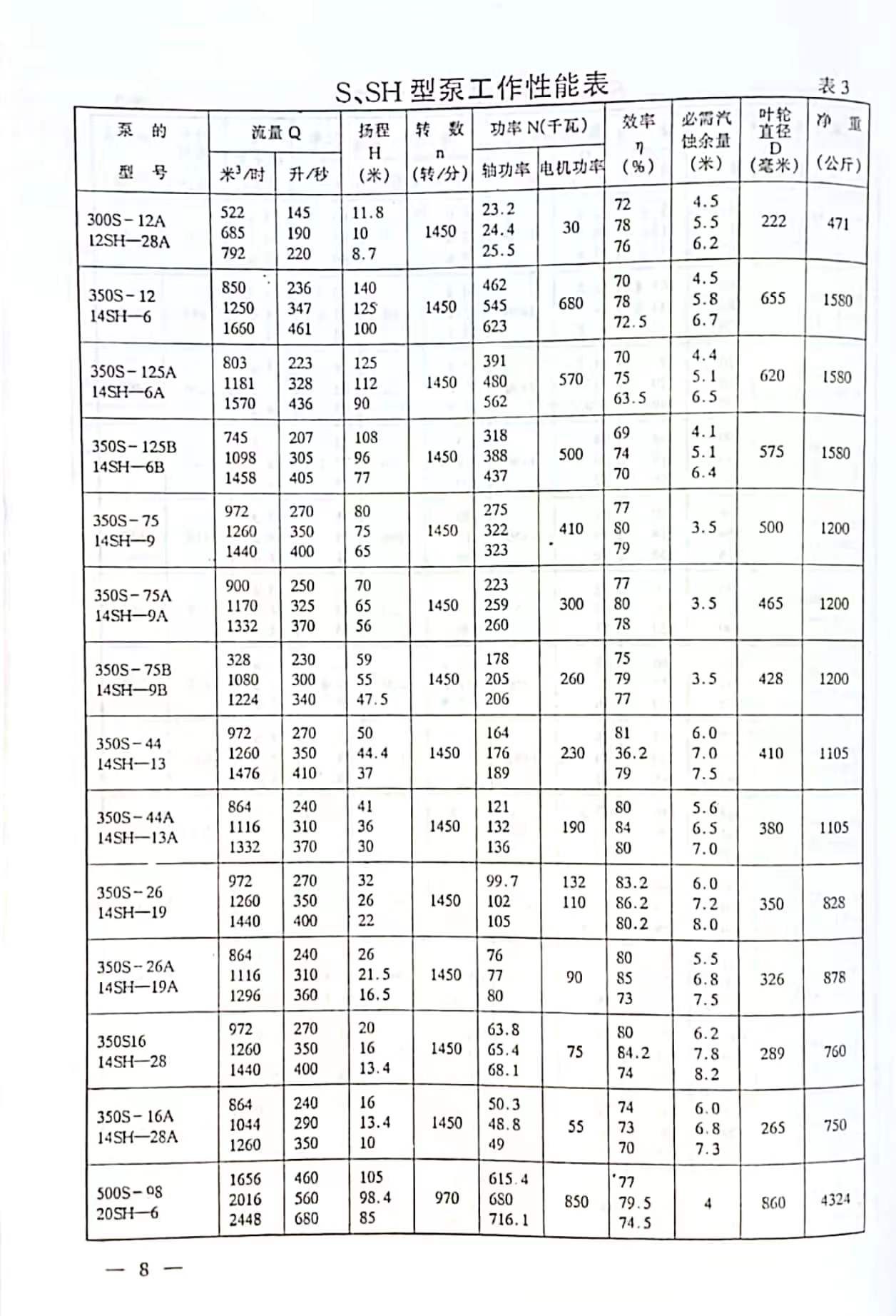
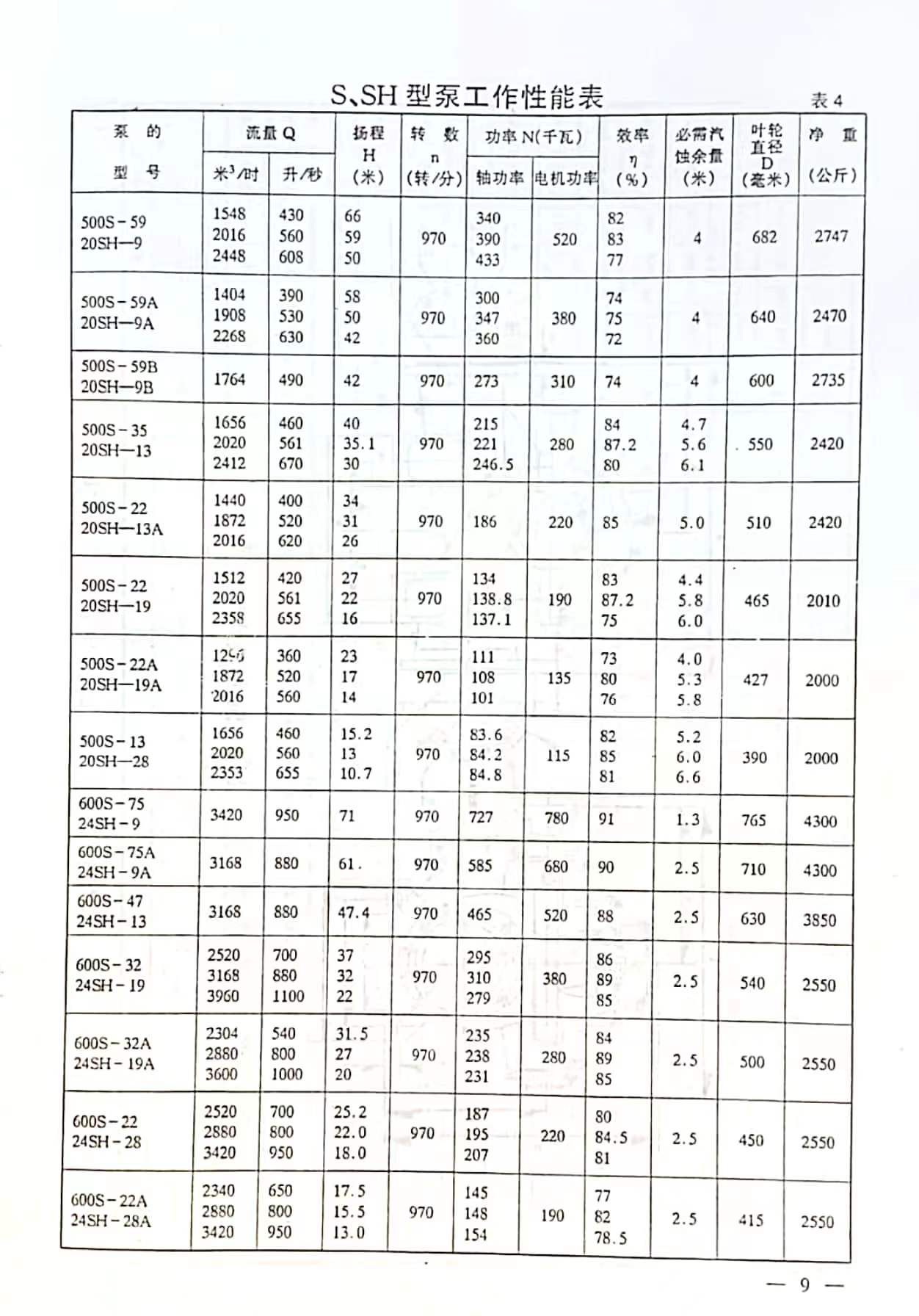
The shaft sleeve (6) is made of cast iron, which is used to fix the impeller position and protect the wear of the shaft in the packing chamber. It is a vulnerable part and can be replaced with spare parts after wear.
S. SH type pump has two supports and uses a single row radial ball bearing. It is called bearing a component at one end of the bearing body (14) near the coupling, and the other end is called bearing B component, which is lubricated with grease. Since the impeller is completely symmetrical, the pump does not generate axial force in theory, but it is difficult to achieve that the water flow passing through the parts on both sides of the pump and the clearance at the sealing ring are exactly the same in manufacturing. Therefore, the pump has the possibility of generating axial force, and the generated axial force and vibration force are borne by the single row radial ball bearing in bearing B.
The packing acts as a seal to prevent air from penetrating into the pump and a large amount of liquid from seeping out. The packing seal is composed of the packing chamber, packing gland, packing ring, packing sleeve and packing on the pump body and pump cover. A small amount of high-pressure water in the pump cover circulates into the packing chamber through the external water seal pipe (or internal water tank) and the packing to act as a water seal.
The tightness of the packing must be appropriate, neither too tight nor too loose. The liquid can seep out drop by drop. If the packing is too tight, the bearing is easy to heat and consume power. If the packing is too loose and the liquid leakage is large, the efficiency of the water pump shall be reduced.
3、 Simple calculation description
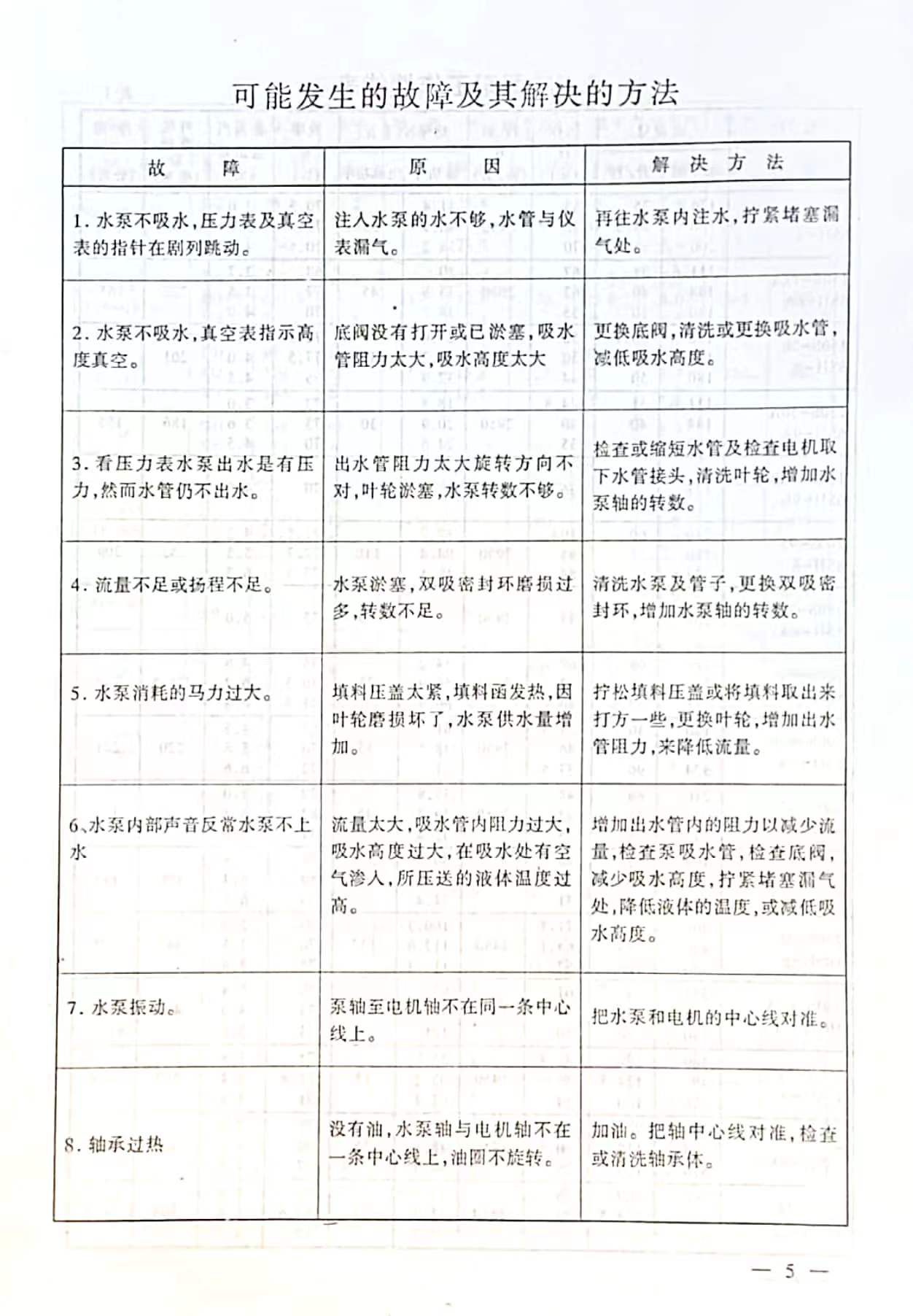
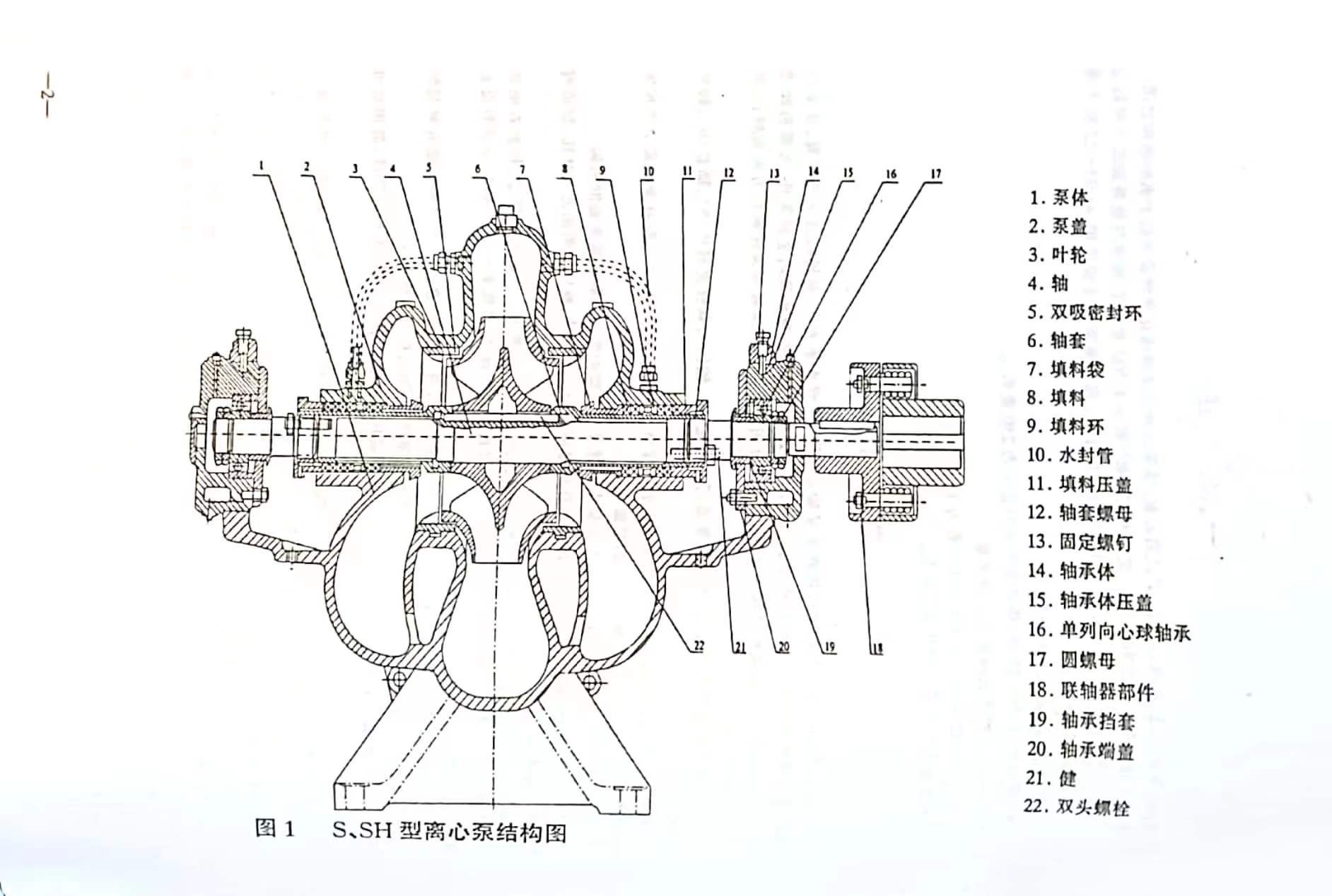
During actual operation, the outlet pressure indicated by the pressure gauge is determined by the vertical height from the pump axis line to the drainage surface and the sum of all head losses in the drainage pipeline (including all valves, elbows and large and small head pipes). The vacuum indicated by the vacuum gauge is determined by the vertical height from the pump axis line to the suction surface and the sum of all head losses in the suction pipeline. Therefore, the sum of the vertical height from the suction surface to the outlet surface plus all the head losses on the suction and discharge pipelines must be within the specified working range of the pump, and it is uneconomical to use it higher or lower than the specified working range of the pump.
The maximum allowable suction vacuum is meter water column: 760 cm Hg at atmospheric pressure. The maximum allowable suction vacuum degree of the pump at a certain flow when the water temperature is 20 ℃. When installing the pump, the user should pay attention to the vertical height from the pump axis to the suction surface. The head loss in the suction pipeline (including valve, elbow, bottom valve, filter screen, etc.) and the influence of water temperature and atmospheric pressure on the suction vacuum degree should be subtracted from the maximum allowable suction vacuum degree of the selected water volume. It can be seen from the performance table that when the water volume increases, The allowable vacuum degree is small. When the water volume is small, the allowable vacuum degree is larger. When the pump works at a certain water volume, the vacuum degree exceeds the allowable vacuum degree of the water volume, the water delivery height and water volume will change, and cavitation may occur, which has a great impact on the service life of the pump.
Under the specified standard speed, the main performance of the water pump meets the main performance listed in the technical specifications.
4、 Assembly, start, stop and operation
1. Installation
1. Preparation before installation
(1) Check the water pump and motor for damage.
(2) Prepare tools and hoisting machinery.
(3) Check the foundation of the machine according to the figure.
2. Installation sequence:
There are two types of finalized water pumps with and without bases. The installation principle is the same. Here, only the installation sequence with bases is described:
(1) Place the base on the foundation, pad iron near the anchor bolt, pad the base about 20-40mm high, and fill the cement slurry after leveling the equipment.
(2) Check the levelness of the pump base with a level gauge. After leveling, tighten the anchor bolt nuts, and fill the pump base and anchor bolt holes with cement slurry.
(3) After 3-4 days of cement drying, the water levelness shall be checked again.
(4) Remove the supporting surface of the pump base, the plane of the water pump foot and motor foot, and place the water pump and motor on the base.
(5) Adjust the pump shaft level (the prime mover shaft can be ignored temporarily). After leveling, properly tighten the nut to prevent moving; After the pump end adjustment is completed, install the motor and pad the base plate on the foot with improper level.
(6) Leave a certain clearance between the pump and motor coupling (refer to the assembly drawing), place the steel ruler on the coupling (observe from top to bottom, left to right), and check whether the pump axis coincides with the motor axis line. If not, pad several thin iron sheets at the foot of the motor to make the motor coupling consistent with the steel ruler. When several thin iron sheets are used, they shall be taken out, the planed whole backing plate shall be used to replace the same thickness, and the installation shall be rechecked.
In order to check the installation accuracy, use feeler gauges to measure the clearance between the coupling planes at several opposite positions, and the difference between the maximum and minimum clearance in a week between the planes at both ends of the coupling shall not exceed 0.3mm. The difference between the left and right sides of the centerline at both ends shall not exceed 0.1mm.
After the water pump is laid, the axis needs to be calibrated for the last time, because it is easy to make the water pump move when the pipeline is laid. Tube,
II. Conveying pipe
1. the water pipe shall have its own bracket to prevent all the weight from pressing on the pump.
2. Gate valve and check valve shall be installed between the drainage pipe and the water pump (not used if the lift is less than 20m), and the inner diameter of the gate valve shall not be less than the inner diameter of the pipe. The check valve is installed behind the gate valve.
3. The following items shall be considered for suction pipes
① Make the pipe as short as possible and reduce bends.
② The bending of pipes shall be in accordance with the general regulations, and shall not be too small to avoid excessive loss.
③ The pipe shall be free of air storage, and the flange connection shall be very firm to prevent air leakage.
④ When the water pump is installed on the water level, the bottom valve shall be connected at the end of the water inlet pipe (except for vacuum water diversion). ⑤ The suction pipe shall also have its own support.
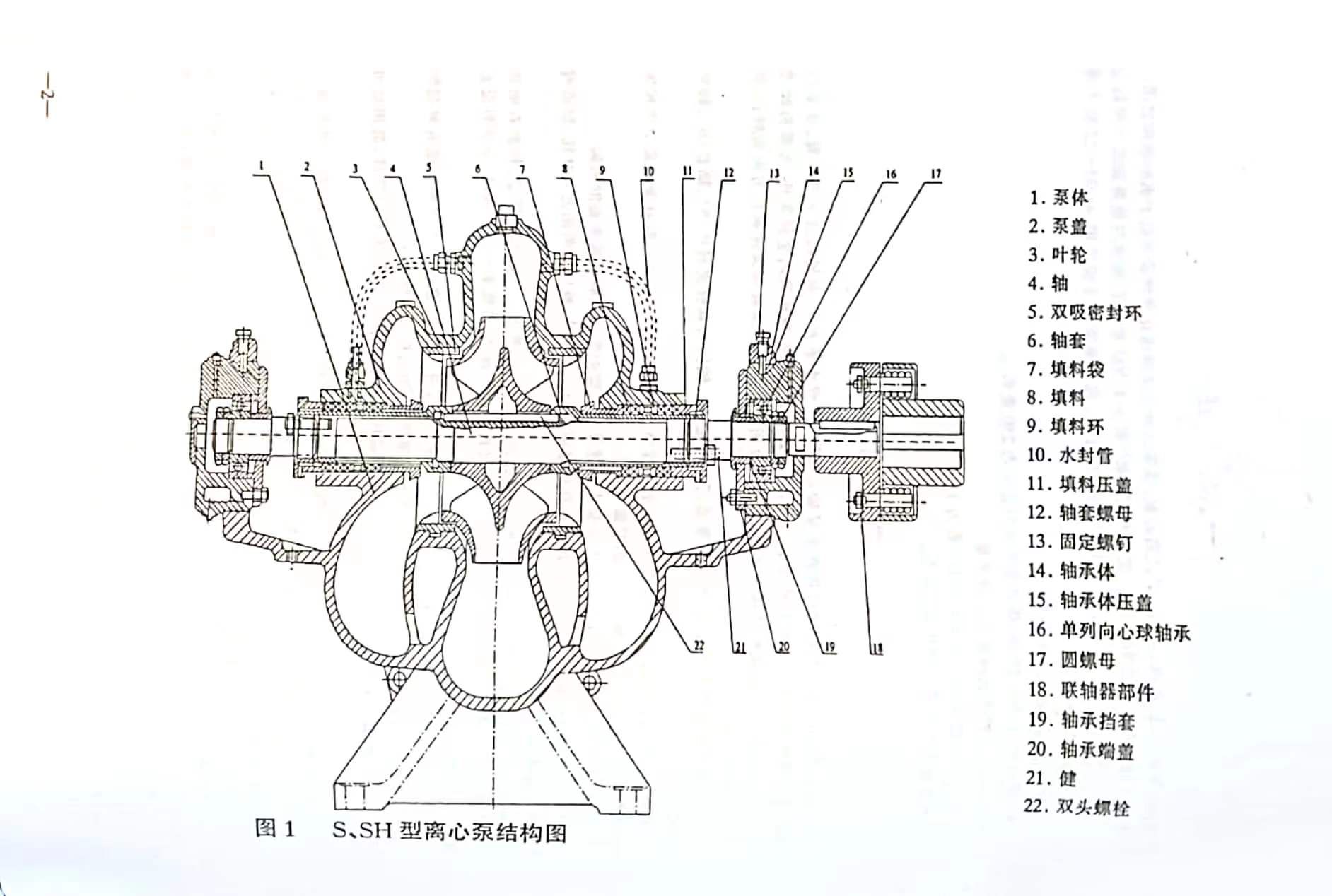
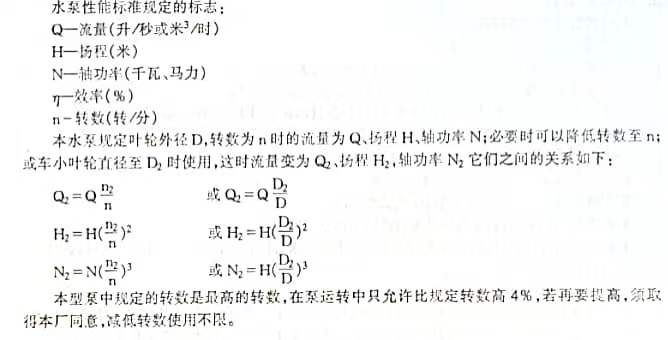
III. start and stop
1. Remove the oil applied on the shaft and other oil bodies.
2. Clean the bearing and oil chamber with gasoline and wipe them with cotton yarn or rags.
3. In the bearing body of the water pump, calcium base grease is injected into the bearing body, accounting for 70% of the bearing body space.
4. Start the test and check whether the rotation direction of the motor meets the requirements of the water pump. At this time, remove the coupling screw and try the rotation direction of the motor again to prevent the shaft sleeve nut from loosening due to reverse rotation.
5. The valve, pressure gauge and vacuum gauge on the drain pipe shall be closed.
6. For water pumps with suction pipe diameter less than or equal to 300mm, remove the three square plugs on the pump cover and fill water from the highest hole. When the suction pipe diameter is greater than or equal to 350mm, open the 1/4 square plug on the reducing four-way pipe, connect the vacuum pump and start water diversion,
7. After the above process, start the motor and turn on the pressure gauge.
8. When the pump rotates normally, the pressure gauge displays appropriate pressure, then open the vacuum gauge and gradually open the gate valve on the drainage pipeline until the required pressure.
9. When the water pump is stopped, the gate valve and vacuum gauge on the drainage pipeline shall be closed slowly, and then the pressure gauge shall be closed. If the external temperature of the environment is low, the square plug at the lower part of the pump body shall be opened to drain the remaining water to avoid frost cracking
10. When the water pump is stopped for a long time, the water pump shall be disassembled, the water on the parts shall be wiped dry, and the sliding surface shall be coated with anti rust oil for safekeeping.
IV. rotating
1. Pay attention to the water pump bearing temperature. The temperature rise of the water pump bearing shall not exceed the external temperature by 35 ℃, but the maximum temperature shall not exceed 75 ℃.
2. The oil change time of type a water pump shall be conducted after 80 hours of operation for the first time, and the oil shall be changed every 2400 hours of operation or every time the water pump is overhauled.
3. The normal water leakage in the packing chamber is about 10-20 drops per minute. If the water leakage exceeds or is too small, the packing gland shall be loosened by pressing.
4. Regularly check the elastic coupling and pay attention to the temperature rise of the motor bearing.
5. In case of noise or abnormal sound during operation, stop the operation immediately, check and eliminate the problem.